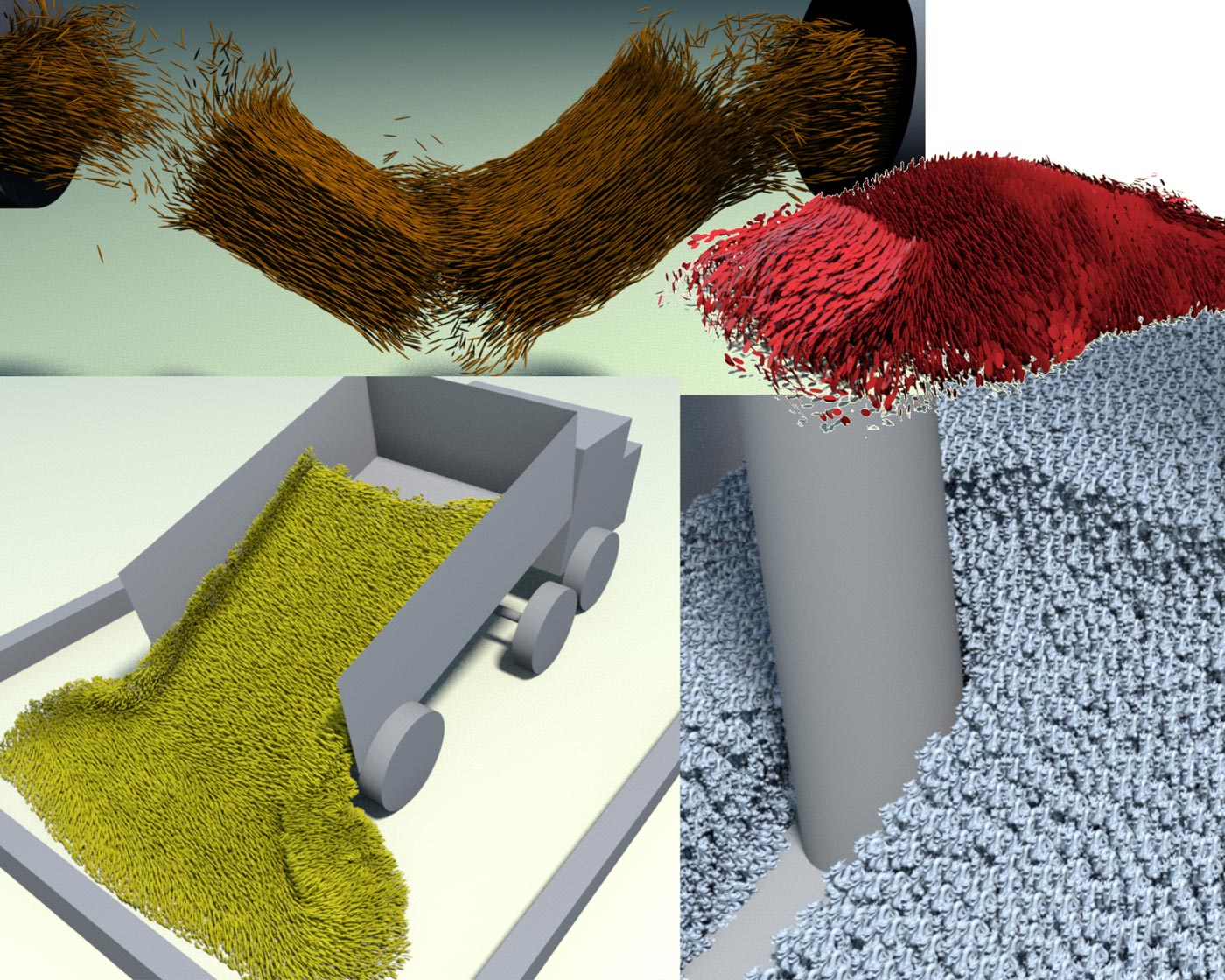May 28, 2020
Efficient animation for visual artists
Researchers demonstrate efficient method for simulating elastoplastic materials and objects composed of irregular-shaped bodies.

Animating the movement of complex deformable materials and objects consisting of large numbers of irregular-shaped bodies may now be easier thanks to a new technique developed by computational scientists at the Institute of Science and Technology Austria (IST Austria). The study is published in the journal Computer Graphics Forum as part of the annual 2020 Eurographics conference.
In the world of computer animation, efficiency is key. One problem confronting many visual artists and animators is the ability to animate complex materials that can bend, flex and exhibit both plastic and elastic-like properties when placed under physical stress. These materials are known as elastoplastic materials. Now, scientists from the group of Chris Wojtan at IST Austria have shown that simulating the behavior of elastoplastic materials can be made more efficient by applying a specialized technique that uses previously established models in a new way. The research could have important implications for visual artists, animators and the computer graphics industry.
“In this project, we wanted to create a tool for artists to efficiently explore a wide variety of elastoplastic phenomena such as fibrous materials –such as splintering wood and shredding bales of hay– or granular material composed of a large number of irregularly shaped bodies such as vaults full of money or piles of twigs,” says Camille Schreck, lead author of the study.
Watch the corresponding video on YouTube
Simulations across differing scenarios. © Wojtan group / IST Austria
Unified approach
In developing their method, the group looked at established techniques for modeling elastoplastic materials that exhibit isotropic behavior (i.e., materials that exhibit the same physical behavior in all directions). They then applied these techniques to more complicated materials that exhibit anisotropic behavior (i.e., materials that exhibit non-uniform physical behaviors in different directions). By reusing and swapping different isotropic models and applying them across various scenarios, the group was able to demonstrate an effective simulation method of anisotropic elastoplastic material behavior using previously established and efficient isotropic techniques.
“While the current research literature is full of established methods that effectively simulate isotropic elastoplastic material behavior. Our method is the first time in computer animation that anisotropic elastoplastic materials have been animated by reusing isotropic models,” says group leader and corresponding author, Chris Wojtan.
Schreck adds: “Visual artists and animators are typically ill-equipped when animating these types of materials. It will be interesting to see where this research is used and built upon in the future.”

About the Wojtan group at IST Austria
Computer simulations of natural phenomena are indispensable for modern scientific discoveries, advanced engineering, and the digital arts. The Wojtan group uses techniques from physics, geometry, and computer science to create efficient simulations and detailed computer animations.
Natural phenomena like flowing fluids and shattering solids are both beautifully chaotic and overwhelmingly complex. This complexity makes them extremely difficult to compute without the aid of a supercomputer. The Wojtan group overcomes this complexity by combining laws of motion from physics, geometric theories from mathematics, and algorithmic optimizations from computer science to efficiently compute highly complicated natural phenomena on consumer-grade computing hardware. Their research achieves some of the world’s fastest and most detailed simulations through a deeper understanding of the underlying mathematical models and inventing novel computational techniques. Their research achieves some of the world’s fastest and most detailed simulations through a deeper understanding of the underlying mathematical models and inventing novel computational techniques.
Funding information
This project was supported by IST Austria and funding from the European Union’s Horizon 2020 research and innovation program under grant agreement No. 638176.
Publication
Schreck, Camille and Wojtan, Chris. 2020. A Practical Method for Animating Anisotropic Elastoplastic Materials. Computer Graphics Forum – Eurographics 2020. DOI: 10.1111/cgf.13914



